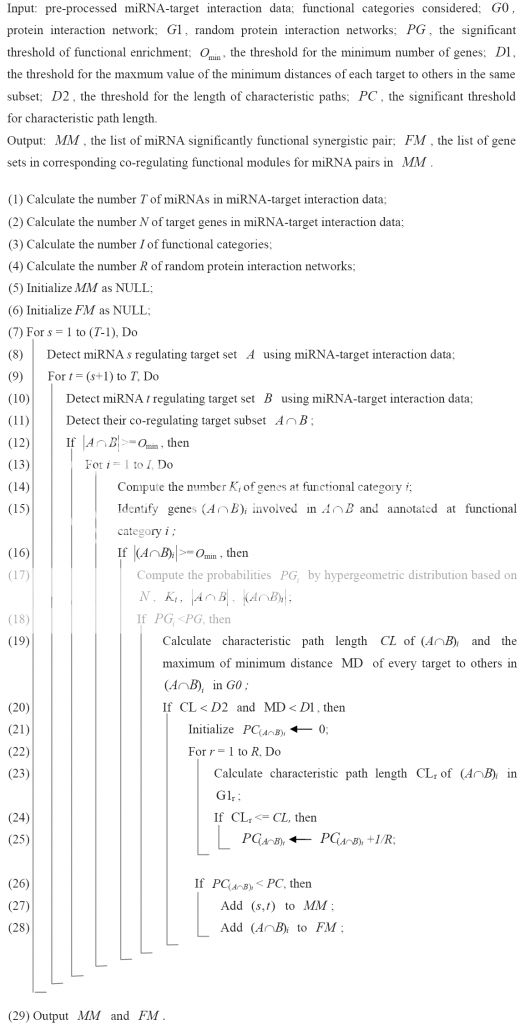I have a pseudocode from a research paper but I need a real program for it to be of any use to me. I am a researcher and will later be integrating this program in to Cytoscape. Cytoscape is written in Java but it can take input from several languages. With this pseudocode, I should be able to find synergistic microRNAs in protein clusters in a protein network. The pseudocode is in the image:

Please note that I have no prior programming experience except a "C" exam I passed in my masters, which I have completely forgotten by now. In my line of work, R can be very useful and also Perl, but for now, I need to pick the best language that can get my work done as soon as possible. I am stuck at a research road block and this will be most useful to me.
Thank you,
Saurabh

Please note that I have no prior programming experience except a "C" exam I passed in my masters, which I have completely forgotten by now. In my line of work, R can be very useful and also Perl, but for now, I need to pick the best language that can get my work done as soon as possible. I am stuck at a research road block and this will be most useful to me.
Thank you,
Saurabh

